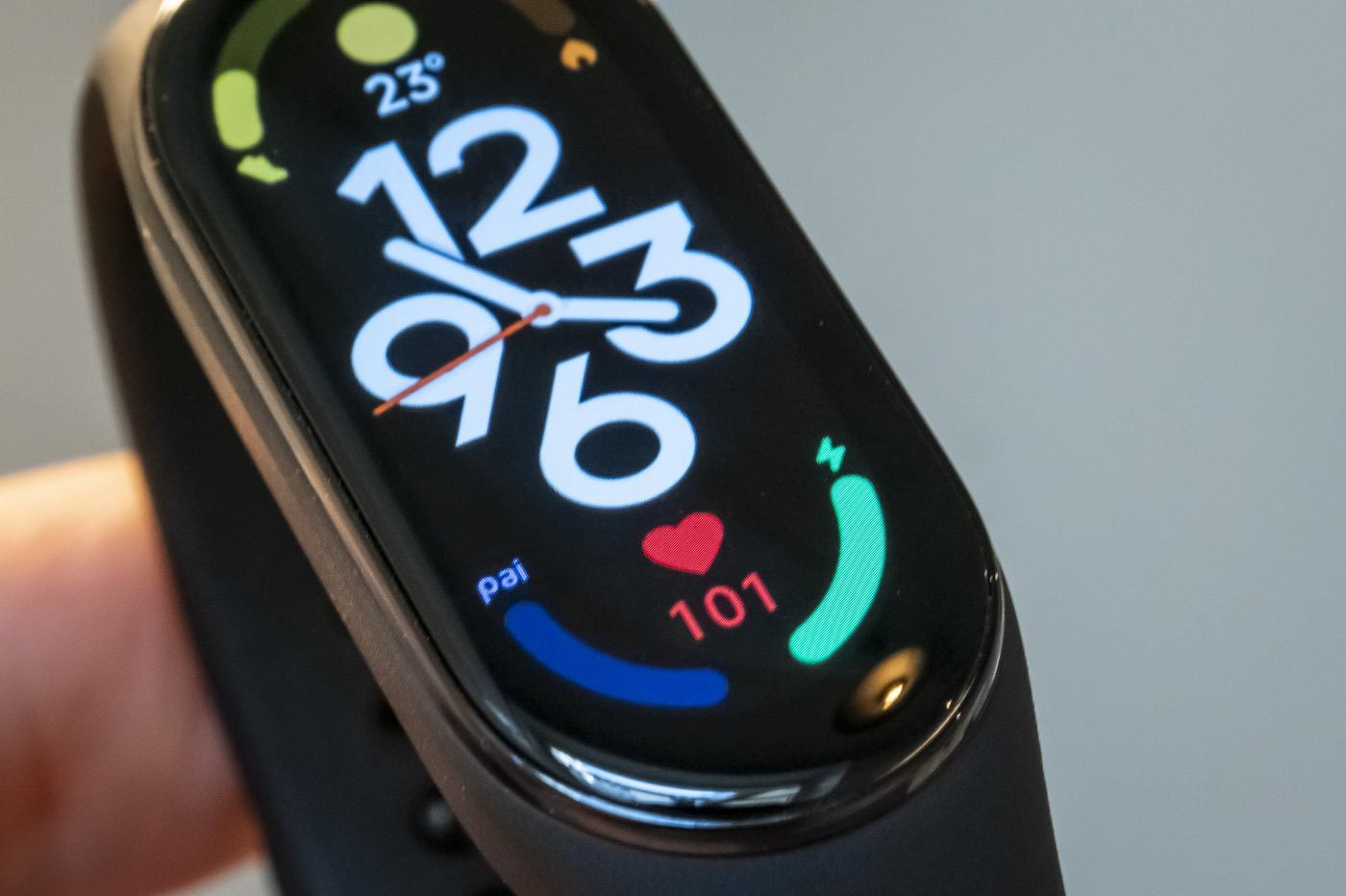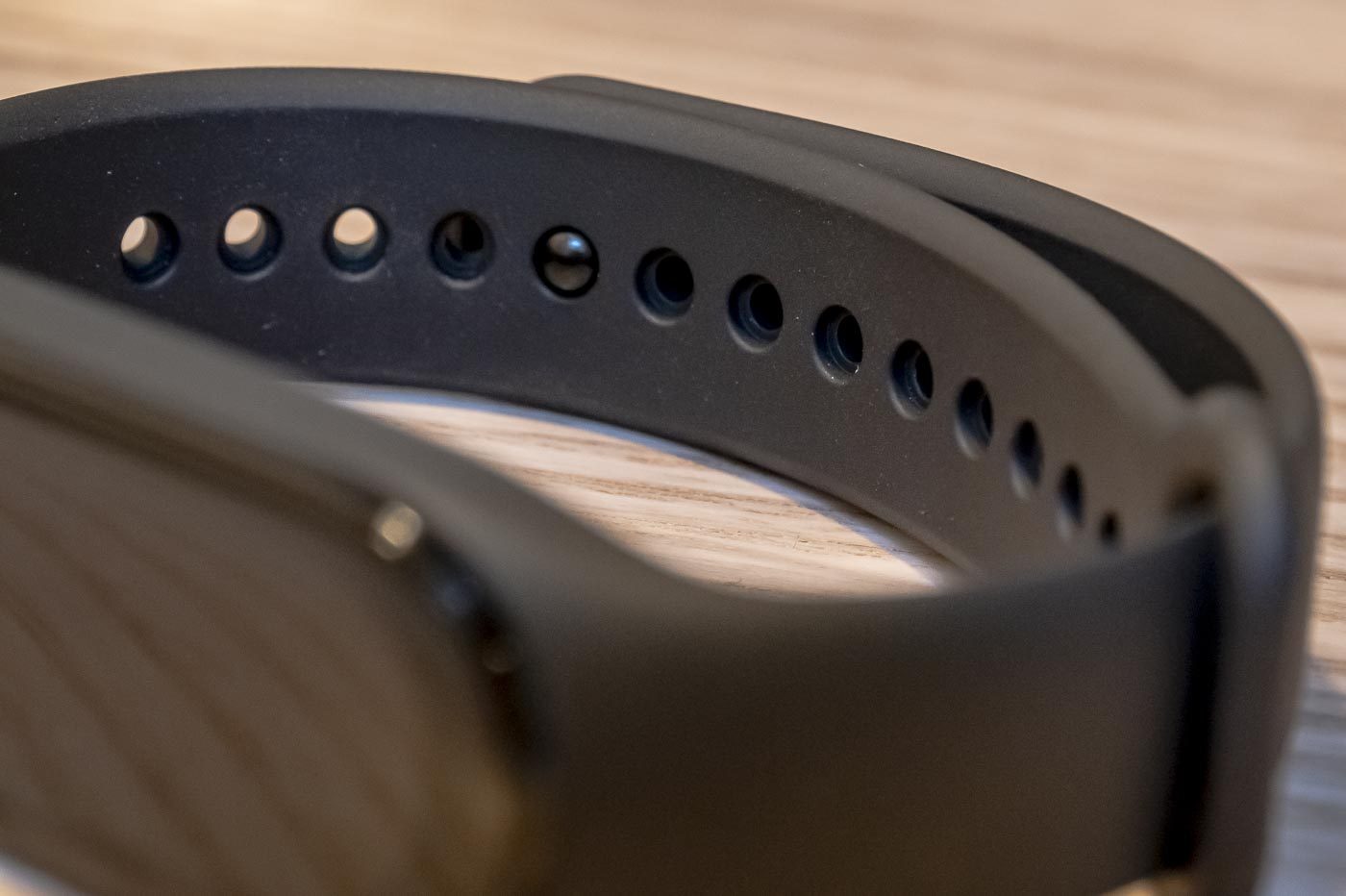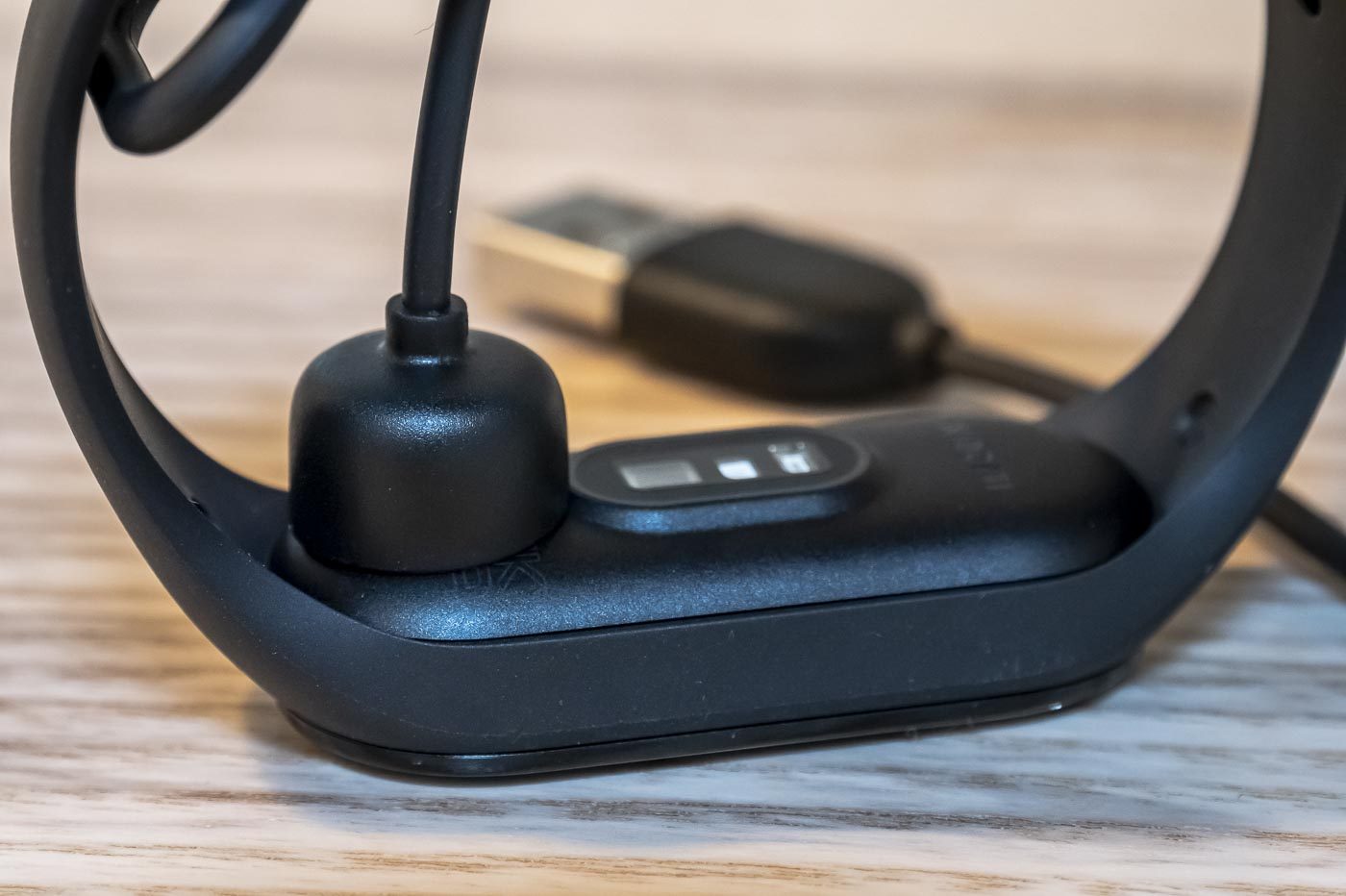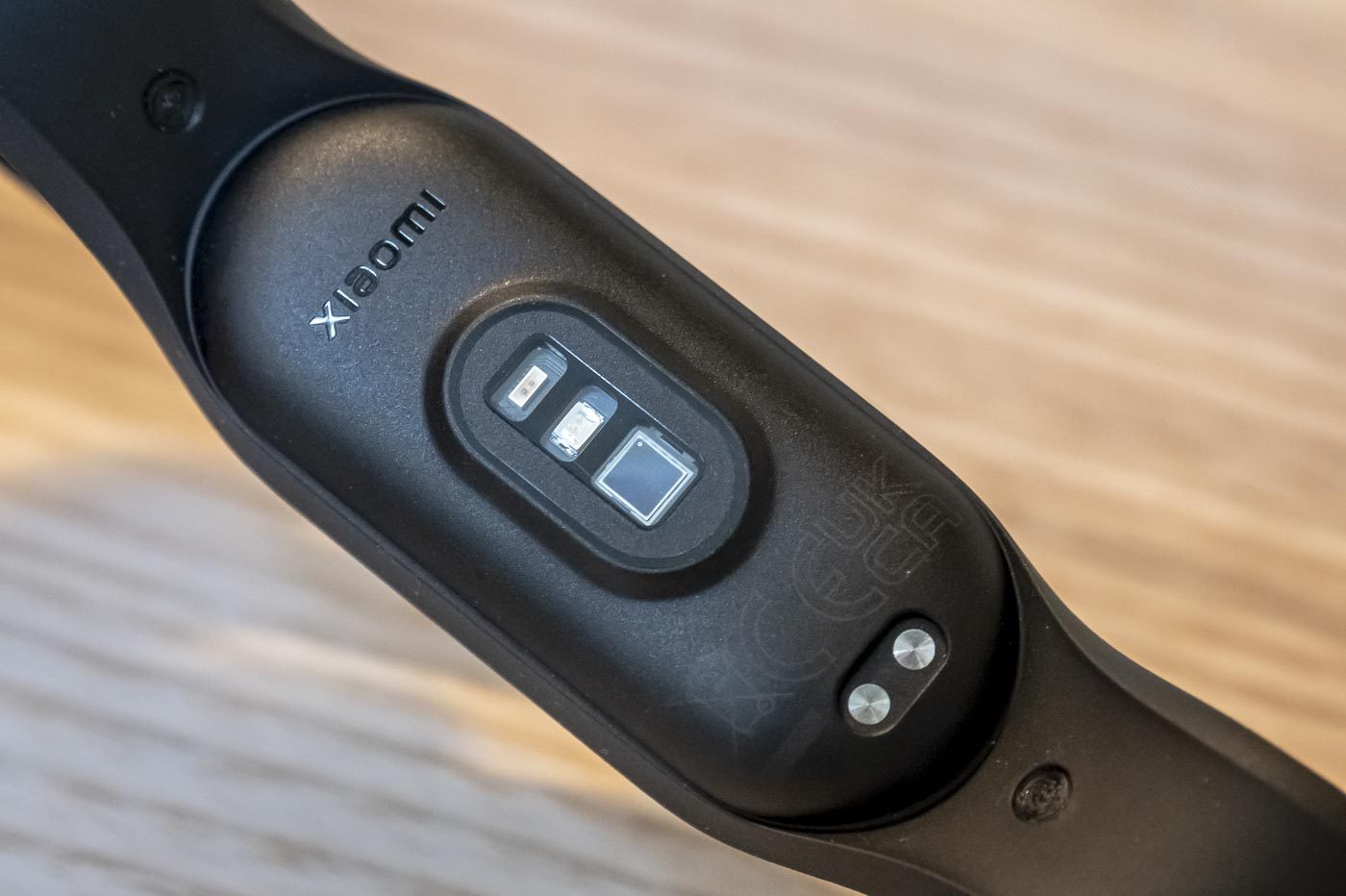The new version of Xiaomi’s connected bracelet promises some new features, including the possibility of having its screen always on, or that of obtaining a VO2 Max measurement. The Chinese manufacturer also insists on its new larger and brighter screen which would bring the Mi Band 7 into another dimension, without varying its price. Sold at 69 euros, the Xiaomi bracelet has been the champion of value for money for several generations. Is this still the case with this new version? Answer in our test.
Design: seen and reviewed, bigger
It’s been a few editions now that Xiaomi has only marginally changed the design of its strap. The last notable aesthetic change dates back to the Mi Band 4. Since then, the Chinese manufacturer seems to have found the right formula with a strap that is oh so classic in its shape. Like the previous editions, therefore, the Mi Band 7 is divided into two parts, the bracelet on the one hand and the activity tracker itself which is inserted into it.
Does this mean that there is no change on the latest version of the Mi Band? On closer inspection, Xiaomi’s bracelet has changed somewhat. In its size on the one hand, since it is slightly thinner while widening (47.4 × 18.6 x 12.7 for the Mi Band 7 against 46.5 x 20.7 x 12.3) . Concretely, it is the size of the screen that varies that of the bracelet. The display of the Mi Band goes from 1.56 to 1.62 inches, which helps to improve the readability of the screen and, more generally, its use.
This screen precisely, Xiaomi has opted for an OLED display with a definition of 192 x 490 pixels. In use, it is more than enough, in conventional light conditions. The good quality of the screen goes hand in hand with its responsiveness. Even if on rare occasions, it is necessary to start again, navigation in the menus is done without a hitch. There remains of course the question of reading certain notifications or extended menu names. On this point, the Mi Band 7, like many of its competitors, does not work miracles. You will have to wait for the (long) scrolling of the characters to read the information. On this point, the connected bracelet from Xiaomi is simply restrained by its format.
As for the bracelet part itself, although it does not evolve especially, it deserves some attention. Made of silicone, it is rather pleasant to wear and clean. On the other hand, its fastening system leaves something to be desired. It rests on a small pin that fits into pre-drilled slots. So far nothing revolutionary. Except that not a day went by that we didn’t have to catch our bracelet about to fall off. Indeed, in wanting to be simple, Xiaomi sometimes pays into simplism.
Simple to use, but limited like a bracelet
In terms of use, the Smart Band 7 is not reinventing the wheel. Since it is completely devoid of physical keys, it must rely entirely on tactile maneuvers. The tracker only resumes classic ergonomics: A swipe down displays the notifications. The same reverse movement allows access to the application menus. Swipes left and right allow you to navigate and move back and forth through the menus. Finally, a long press allows you to change the dial. In this regard, Xiaomi offers five new dials on this bracelet and still allows to import dozens of them.
In its approach as in its use, the Mi Band 7 is a connected bracelet that could not be more classic. Compact, light and easy to handle, it knows how to be discreet, even to be forgotten, which is undoubtedly its main strong point. Conversely, like many bracelets, it does not allow you to go as far as a connected sports watch, even entry-level. A size limit for example: it is impossible to install third-party applications. If to run in music with Spotify, there will always be the smartphone, it is however impossible to integrate the Strava application, yet a must for connected athletes. Here, the bracelet is simply content with a basic activity sharing function, without taking into account the recorded data.
Finally, among the interesting features of this Mi Band 7, let’s highlight the possibility of adjusting the brightness of the screen, a torch mode or even a “find my phone” function which can be useful.
Application: double jeopardy
Like most of its competitors, the Mi Band needs an app to be paired and to give the full measure of its capabilities. Unfortunately for our sanity, Xiaomi has decided to complicate things. Its bracelet can therefore work with two applications. On this point, the Chinese brand pays for not having been able to decide between its two old applications Xiaomi Wear and Mi Fit, which have become respectively Mi Fitness and Zepp Life. It is therefore the last two that can be linked to the bracelet, and if Xiaomi rather recommends the first, we will recommend the second, which is a little more complete.
This has the advantage of presenting a clearer welcome menu as well as a better history of activity sessions. Conversely, it does not allow you to transfer your running data to Strava, unlike Mi Fitness, nor does it allow you to personalize your connected bracelet as much as its alternative. For the rest, we are on an equivalent level of performance between the two in-house solutions.
The main interest of the application is of course to be able to display the data collected by the bracelet in a more readable and better ordered way. It is certainly possible to have his last exercise, his average heart rate or his sleep score on the bracelet, but their display can be laborious and the search for information painful. The application can be configured to display the data that interests you in priority. Therefore, a single glance is enough to know if we have walked enough, if our stress level is high or if we are susceptible to sleep apnea (SpO2). The data collected by the Mi Band must still be relevant… which brings us to another question.
The Mi Band for sport, is it worth it?
Should you opt for a sports watch or a connected bracelet? To the unavoidable question that presents itself to the amateur sportsman, Xiaomi does not give an answer. Its performance, on the other hand, makes it possible to know if it is in line with your sporting requirements or if it will be necessary to prefer a superior model, or even a real sports watch. If this is your question, the following paragraphs should allow you to see it more clearly. The Smart Band 7, like many of its competitors, works thanks to a bunch of diverse and varied sensors, but above all thanks to the magic operated by its accelerometer and its gyroscope, both on three axes. These are the two most relevant measurement elements, with the heart rate sensor of course.
As a result, Xiaomi’s bracelet is quite relevant in its measurement of the number of steps, calories burned and… time. For the rest of the data and more for the different scores and indices provided, it will depend on your level of requirement.
Without GPS, Xiaomi’s bracelet can either work without it, so you won’t see your route appear on a map, or rely on that of your smartphone. Most recent phones have precise location sensors. As a result, the distance traveled data will often be good. In our case, we revealed a difference of barely 200 m on our 10 km outings, running, with our reference watch. On the other hand, if you want to preserve the autonomy of your smartphone, it is better to forget the capacity of the Mi Band to extrapolate the data. An example: on a 13 km run, Xiaomi’s bracelet only counted 9.54. As for the bike, aware of its limits, the bracelet simply does not offer a distance estimate if it is not synchronized with your phone’s GPS. This synchronization is the other grievance we have against the Mi Band 7. When starting a sports session, the bracelet checks that it is well synchronized with the smartphone. However, our test model sometimes tripped up, launching a synchronization without managing to establish it.
The heart rate measurement is quite accurate. To take it by default, you have to subject your heart to strong variations, during a split session for example. In this case, the Mi Band will be able to note variations in rhythm and changes in HR amplitude, but with a certain lag. On this point, the cardiac belt remains unsurpassable.
Now let’s come to one of the novelties of the Mi Band 7. It would be able to estimate the VO2 Max of its wearer. That is to say, the maximum flow of oxygen that the body is able to absorb during an effort. Several watches also offer this feature with varying degrees of success. In our case, after a month of use, and about fifteen sports activities to make its estimate, our connected bracelet fell… completely off the mark. Indeed, the Mi Band estimates our VO2 Max at 37 when it is actually 10 points higher, an abyss. It is probably because it is so approximate that this data is so difficult to find in the menus of the bracelet (it is the second submenu of the “training status” part).
Ultimately, the Mi Band 7 does not work miracles on the sports part. For basic measurements, it will do the trick. On the other hand, with regard to the extrapolation of data or more complex indicators, it is better not to refer to its analyses.
Autonomy: a model of its kind
If there is one point on which the Mi Band 7 is absolutely flawless, it is autonomy. Obviously, this is dependent on the number of physical activities that the bracelet will have to record, the choice to turn on its screen permanently, or not, or the frequency at which it measures your heart rate. Under these conditions, it is very difficult to determine what is the classic use of a connected bracelet insofar as it will vary from one person to another.
In our case, with an average of three to four physical activities per week, a few notifications activated, a sporadic consultation of the heart rate and the always on option deactivated, the battery of the Mi Band survived more than eight days without going through the box. recharge. In order to estimate the bracelet’s energy loss, we ran for an hour immediately after charging it. At the end of this activity during which the bracelet requested the GPS of our smartphone, the Mi Band 7 only lost 2% of autonomy. This always on function, one of the novelties of this bracelet, therefore makes it possible to have the time displayed at all times, but seriously reduces autonomy. Despite everything, the Xiaomi bracelet knows how to last and be forgotten, which is rather a good point. On the other hand, when it needs to be recharged, it is better to have thought of taking the proprietary charging cable or risk not being able to revive the battery.
[related_posts_by_tax taxonomies=”post_tag”]
The post Xiaomi Mi Band 7 review: small strap, low price and… low performance appeared first on Gamingsym.
